1. Overview
Józef Jan Gosławski (1908-1963) was a highly influential Polish sculptor and medallic artist, renowned for his significant contributions to public monuments, coin design, and medals. Born in Polanówka and raised in Wąwolnica, Gosławski's artistic journey began in Poland before his pivotal studies in Rome, which profoundly shaped his style. He is celebrated for designing iconic Polish coins, such as the 5 PLN "Fisherman" coin, and creating monumental sculptures, including the Frédéric Chopin monument in Żelazowa Wola. His medallic art, often reflecting themes of Polish national identity and history, is widely recognized, with his works acquired by numerous museums across Poland and Europe. A laureate of many artistic competitions, Gosławski was also honored with the Silver Cross of Merit, solidifying his legacy as a prominent figure in 20th-century Polish art.
2. Biography
Józef Gosławski's life was marked by a deep commitment to art, enduring through periods of war and significant artistic evolution.
2.1. Early Life and Education
Józef Jan Gosławski was born on April 24, 1908, in Polanówka, located in the Lublin Governorate of Congress Poland. He grew up in Wąwolnica alongside his parents, two brothers, and two sisters. His younger brother, Stanisław Gosławski, also pursued a career as a sculptor. Gosławski began his formal artistic education at the Building Crafts School in Kazimierz Dolny, an institution founded by Jan Koszczyc-Witkiewicz. After completing his studies there, he successfully passed the entrance examination for the Academy of Fine Arts in Kraków. However, he was deemed too young to commence his studies at that time. Consequently, he continued his education at the National Decorative Arts and Artistic Industry School, also in Kraków. During this early period, he was influenced by the ideas of Stanisław Szukalski, though he was not a member of Szukalski's "Horned Heart Tribe."
2.2. Studies and Early Career
In 1932, Gosławski finally began his studies at the Academy of Fine Arts in Kraków, where he was mentored by Professor Xawery Dunikowski. He later relocated to Warsaw to continue his education under Professor Tadeusz Breyer. His talent earned him a scholarship to study in Rome, where he graduated from the Royal Academy of Fine Arts in 1937, having been taught by Angelo Zanelli. During his stay in the Kingdom of Italy, which lasted until 1939, Gosławski actively participated in exhibitions organized by "Kapitol" (Polish: KapitolPolish), a society of Polish artists. He also served as the society's vice chairman, demonstrating his early leadership within the artistic community.
2.3. World War II and Post-War Period
Gosławski returned to Poland in July 1939 with the intention of becoming a conservator for the Royal Castle in Warsaw. However, the outbreak of World War II prevented him from assuming this position. He spent the years of German occupation in Wąwolnica. Following the conclusion of the war, he dedicated his efforts to restoration work, including the renovation of a 17th-century house known as the house under St. Nicolaus in Kazimierz Dolny. In 1947, Gosławski was appointed to the Medal and Metal Sculpture Chair at the National Artistic School in Poznań. He also served two terms as the chairman of the Poznań district of the Association of Polish Artists and Designers (ZPAP), further establishing his role in the post-war artistic reconstruction of Poland.
2.4. Personal Life and Death
In 1948, Józef Gosławski married his student, Wanda Mankin. Together, they had two daughters, Bożena Stefania and Maria Anna. In 1956, Gosławski and his family moved to Warsaw, where he assumed the role of chairman of the Sculpture Department within the central board of the ZPAP. Józef Gosławski died suddenly in Warsaw on January 23, 1963. His passing occurred at the very beginning of what was anticipated to be a new and significant artistic phase in his career.
3. Artistic Style and Works
Józef Gosławski's artistic output was diverse, characterized by continuous exploration and a focus on the human element, encompassing monumental sculptures, intricate medals, and insightful caricatures.
3.1. Artistic Development and Influences
Gosławski's artistic journey was marked by a dynamic evolution of style. His early works, many of which have not been preserved, show an influence of Cubism, evident in pieces such as his Self-portrait (1932-1933) and Portrait of Witold Chomicz (1927-1928). Ideas from Stanisław Szukalski also left an impression, seen in his sculptural caricature of Henryk Uziembło. Additionally, some of his early designs, like the St. Franciscus altar, reflected forms similar to those promoted by the Polish Applied Art Society.
His period of study in Italy and direct exposure to Italian art significantly altered Gosławski's artistic perspective. Portraits like Robert, Maria Maro, and Sicilian demonstrate a strong influence from his studies of antique sculpture. This classical influence, combined with the impact of the Italian Renaissance, is also discernible in the early medals and plaques he created in Rome. Unfortunately, nearly all of his pre-war works were lost during their return journey to Poland in August 1939, though there is a possibility that some pieces may have remained at Castello del Catajo.
The years of World War II, despite their challenges, were not artistically unproductive. The wartime conditions compelled Gosławski to focus on smaller sculptural forms. The medals he created during this period primarily addressed the martyrdom of the Polish nation. After the war, he continued his work in medallic art, becoming a pioneer in moving away from the classical forms and shapes of medals. He served as a unique link connecting the generation of Konstanty Laszczka and Józef Aumiller with later medallists. His prominent standing in medallic arts is underscored by numerous awards and the acquisition of his works by museums across Poland, including Warsaw, Wrocław, Kraków, Lublin, and Toruń, as well as in other European cities such as Prague, Athens, Budapest, Rome, Vatican City, Paris, The Hague, Moscow, and Sankt Petersburg.
Gosławski's works are difficult to categorize due to his constant artistic exploration and a drive to create in diverse forms and materials. However, the central theme of his art consistently remained the human being, depicted both as a heroic figure and in everyday life. Known for his modesty and friendly demeanor, even his sculptural caricatures, a rare art form among sculptors, are characterized by a benevolent sense of humor rather than malice.
3.2. Monumental Sculpture
Following World War II, Gosławski returned to monumental sculpture, creating several significant public works. Among these are the Adam Mickiewicz monument in Gorzów Wielkopolski, the Never war monument in Żabikowo (a district of Luboń) near Poznań, and the allegorical sculpture group known as Music in Warsaw's MDM. One of his most notable works is the Frédéric Chopin monument in Żelazowa Wola, completed between 1955 and 1969.
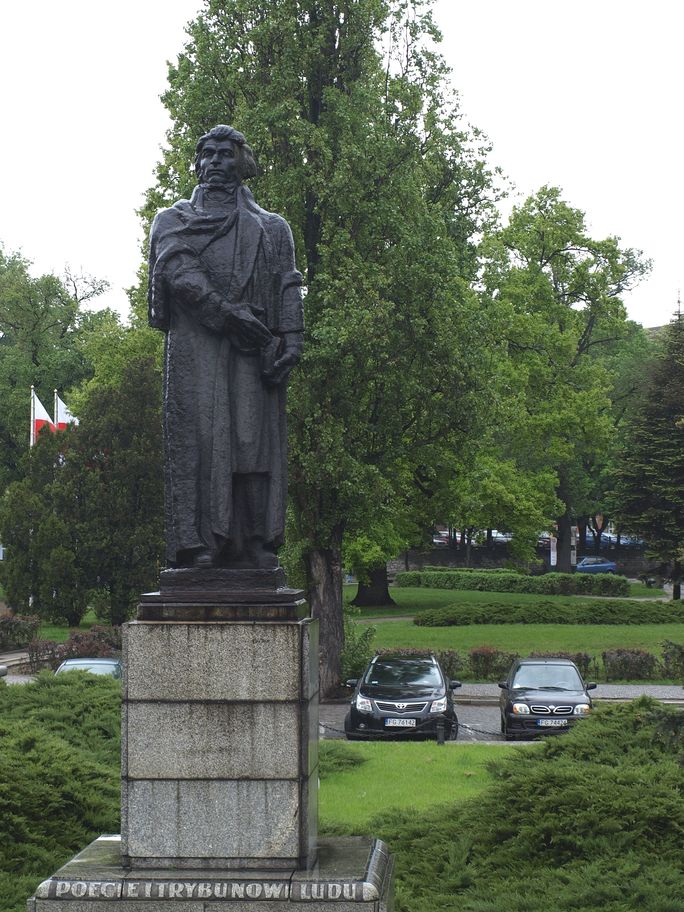
Gosławski actively participated in and won numerous competitions for monument design. These include contests for the Heroes of Warsaw monument, the Soldiers of I Army of People's Army of Poland monument, and the Bolesław Prus monument. He also created a monumental altar of the Transfiguration of Jesus in Masłów near Kielce.
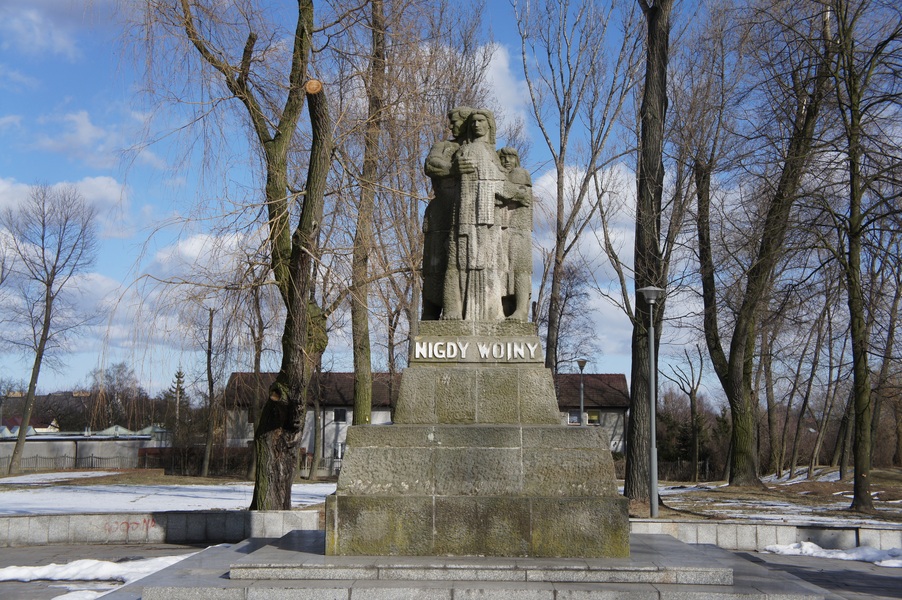
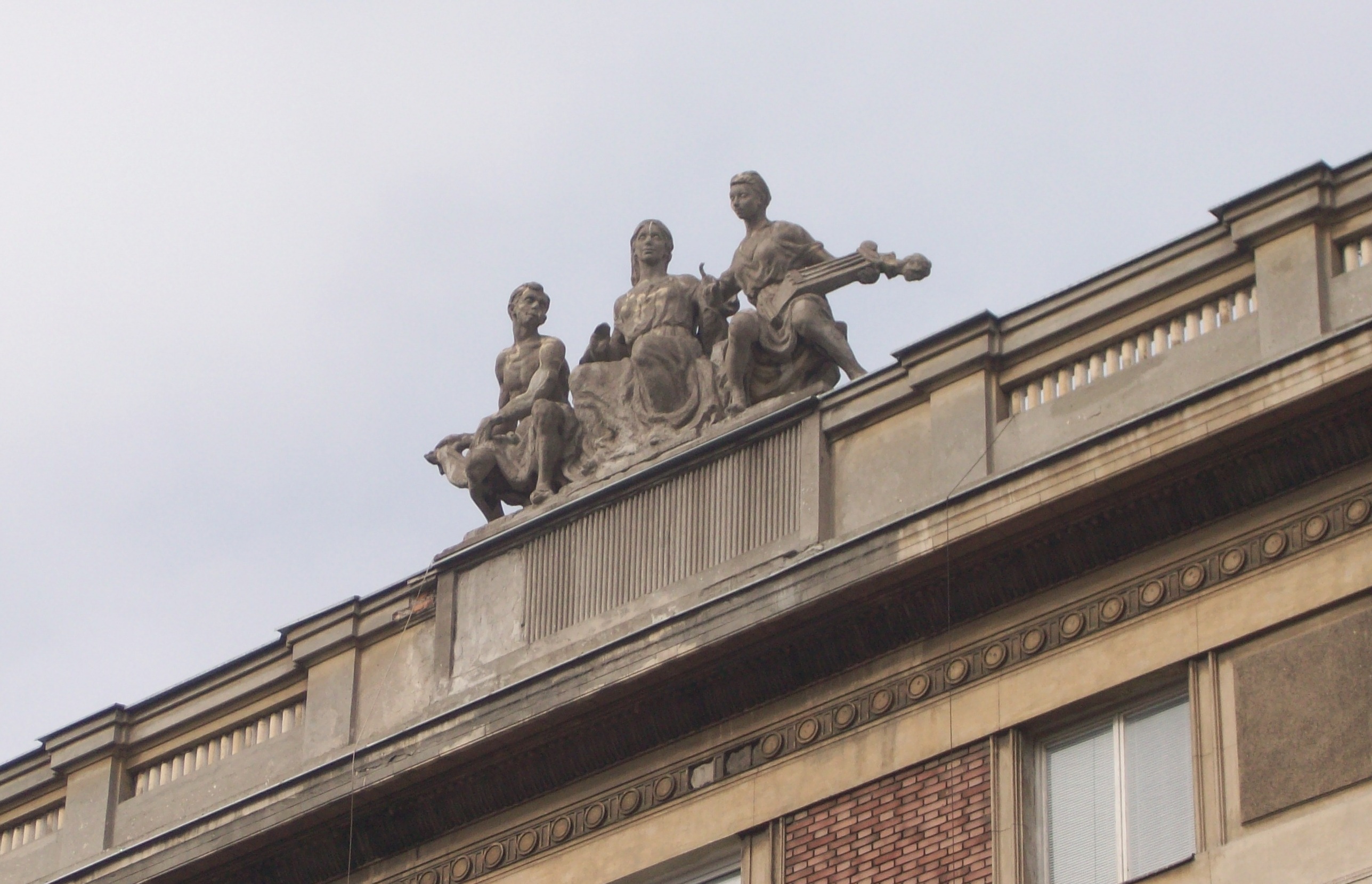
3.3. Medals and Coins
Józef Gosławski made significant contributions to the fields of medallic art and coin design. He was the designer of several Polish coins, including the notable 5 PLN coin featuring a fisherman, which was put into circulation in 1958.
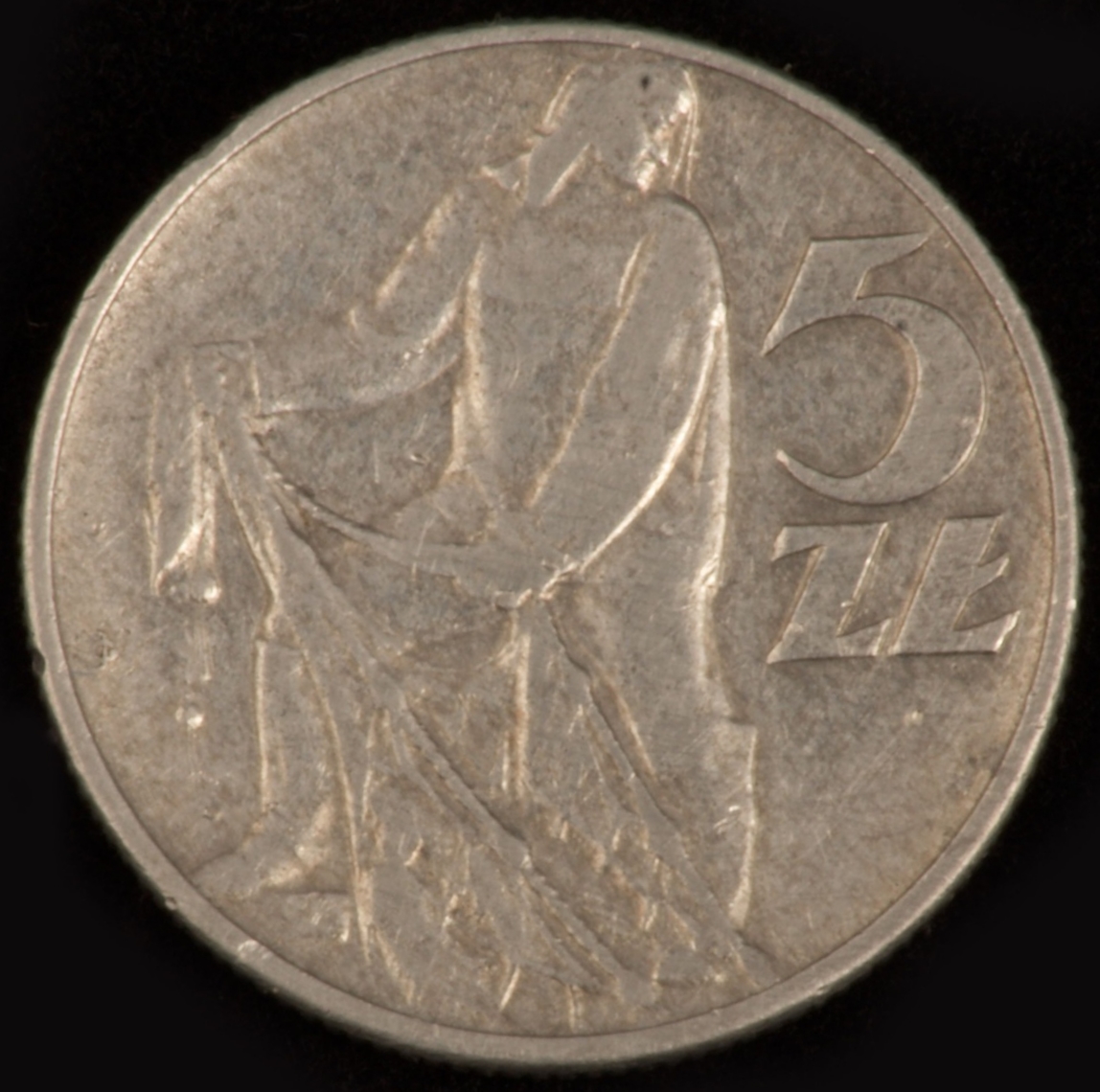
Other coin designs from a 1958 competition organized by the National Bank of Poland include the 10 PLN coin depicting Mieszko and Dobrawa, which won first prize and was later struck in 1966 as a 100 PLN silver commemorative coin for the millennium of Polish statehood. He also designed a 10 PLN coin featuring Nicolaus Copernicus, which was circulated in 1959. Additional coin designs included the 5 PLN The Waryński Vessel and 2 PLN coins like The Cockerels (second prize), The Elk, and the reverse of a coin with an eagle image (second prize).
His medallic works include pieces such as the Year 1939 medal and the Medal for Sacrifice and Courage (1960).
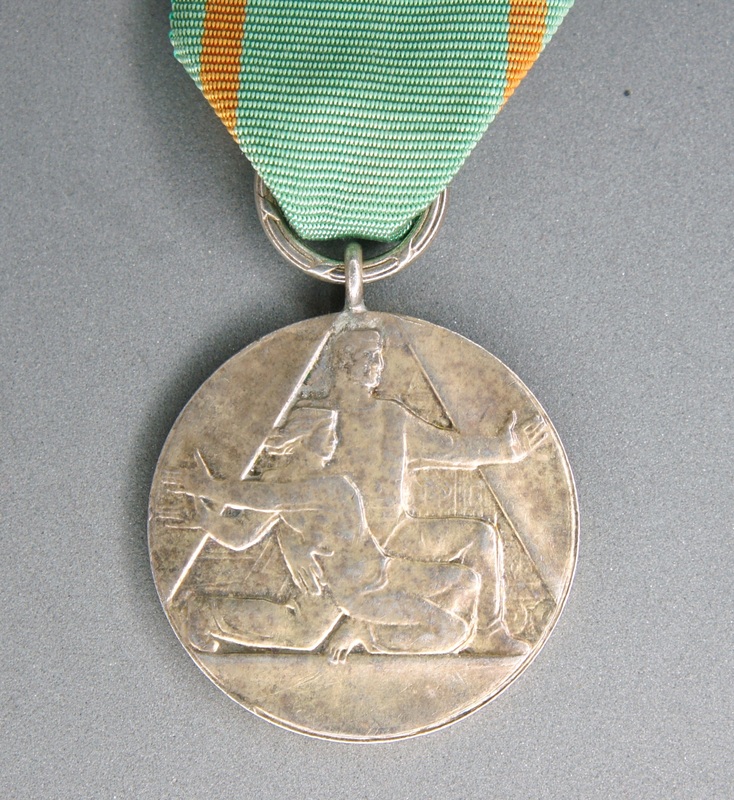
Gosławski's strong position in medallic arts is evidenced by numerous awards and the acquisition of his works by museums across Poland and Europe. Among his notable medallic works are those depicting historical figures.
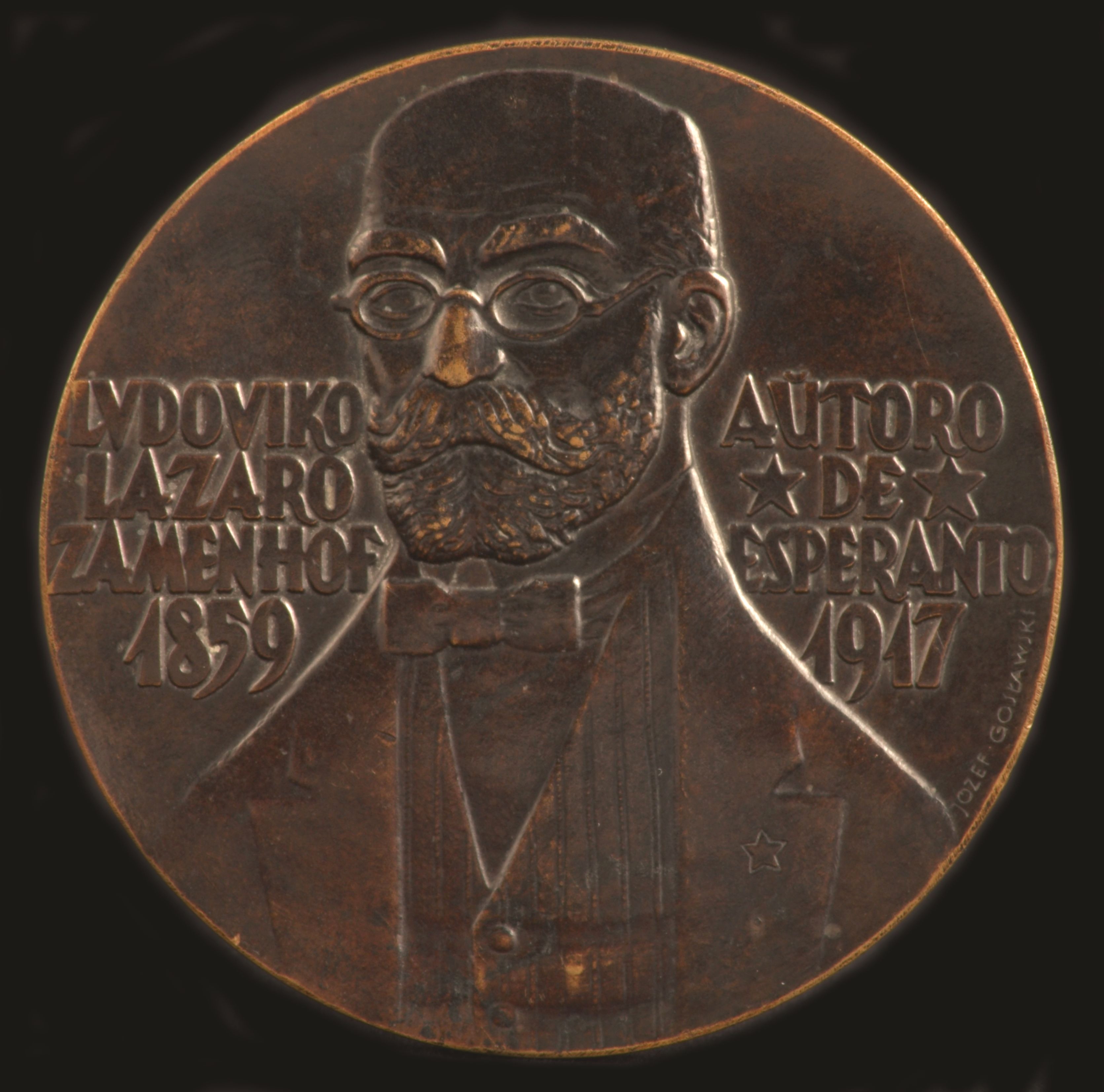
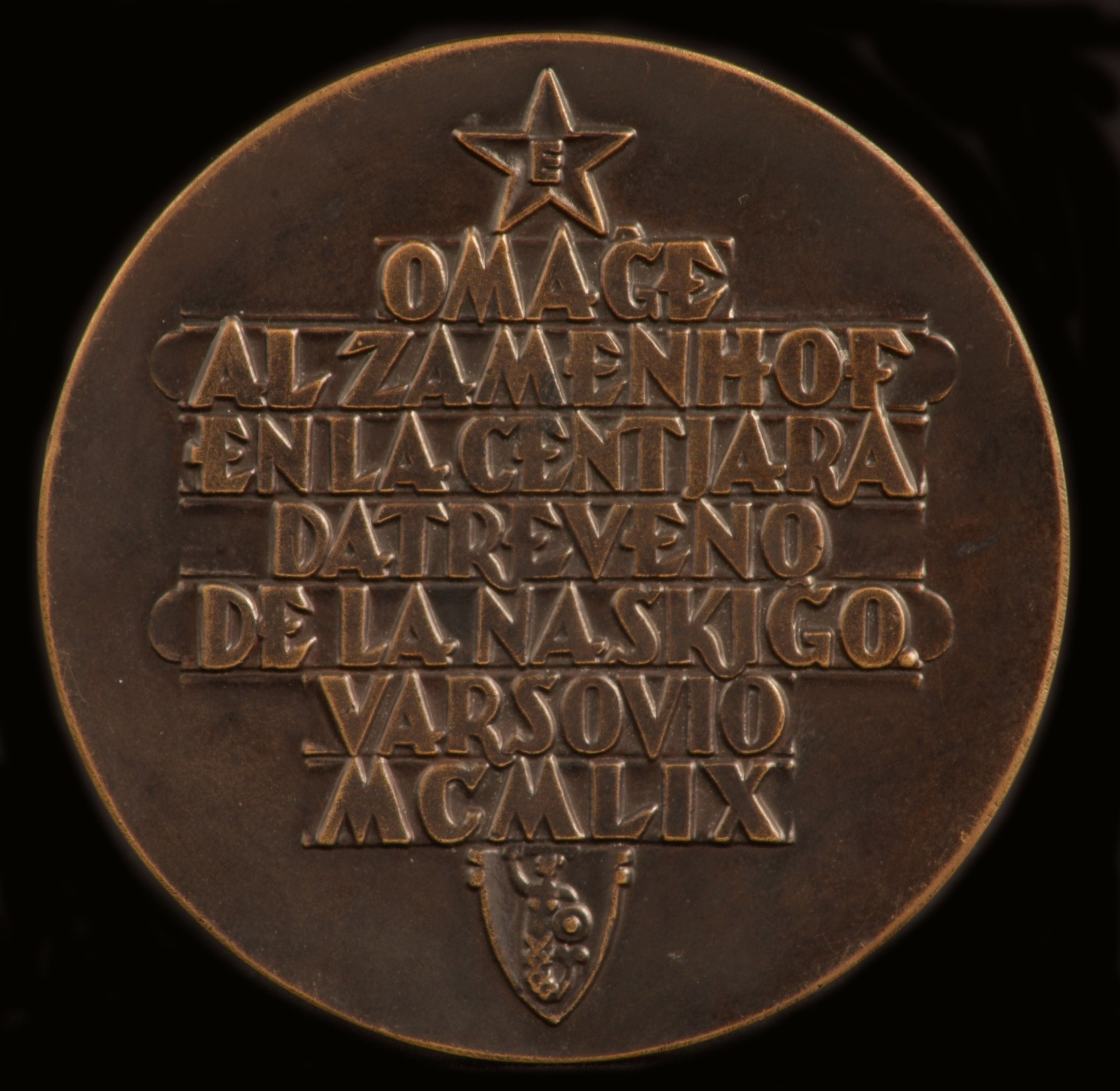
3.4. Sculptural Caricatures and Other Works
Beyond monumental and medallic art, Józef Gosławski was also a creator of portrait sculptures, sculptural caricatures, and drawings. His caricatures are particularly notable for their benign sense of humor, a rare trait among sculptors. Among his well-known caricatures are those of prominent figures such as Mohandas Karamchand Gandhi (created in 1932) and Henryk Uziembło.
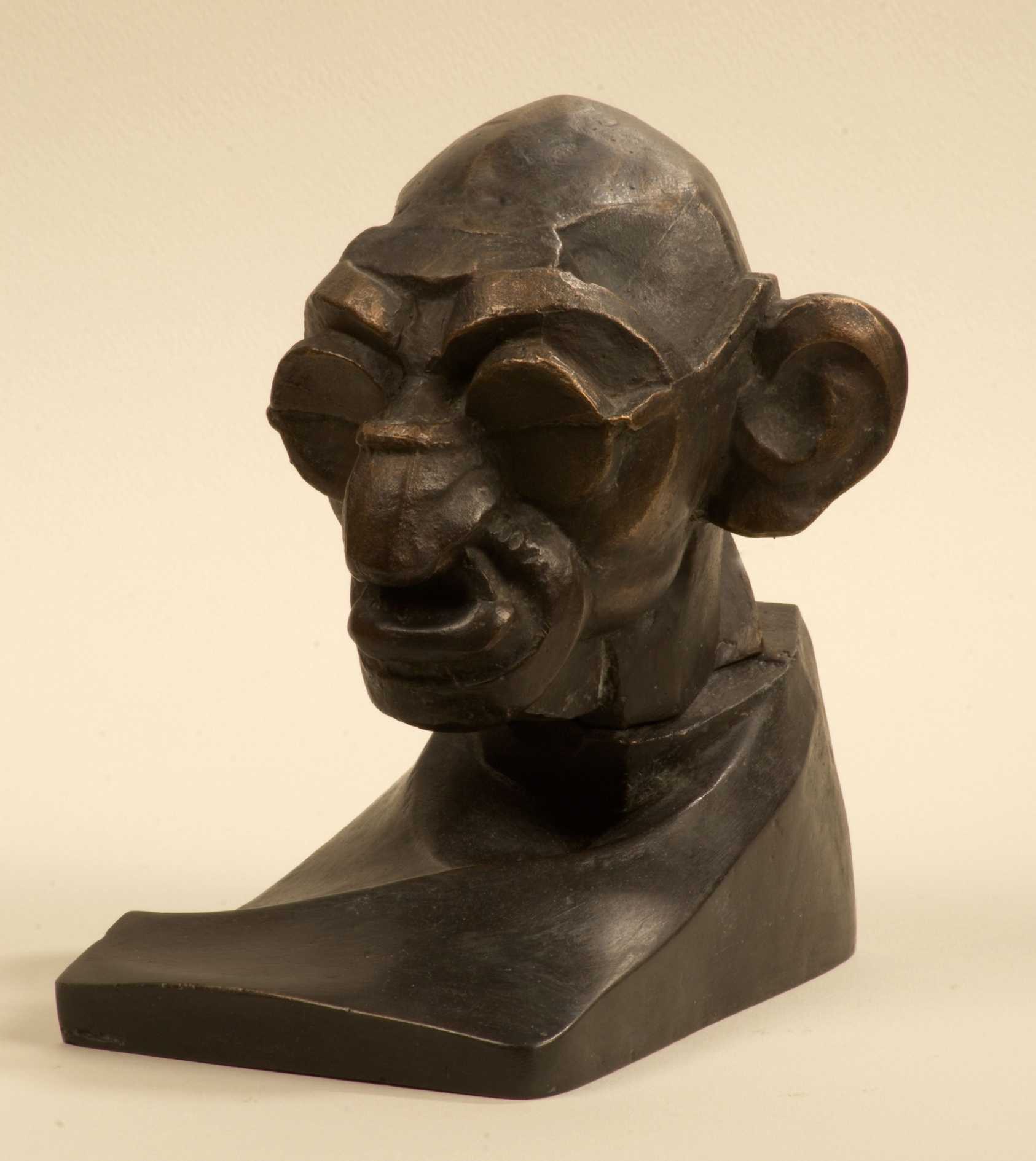
In addition to these, Gosławski also undertook renovation projects and created other smaller artistic pieces, such as the monument on the tombstone of Janina Gałowa at Rakowicki Cemetery in Kraków, completed in 1932.
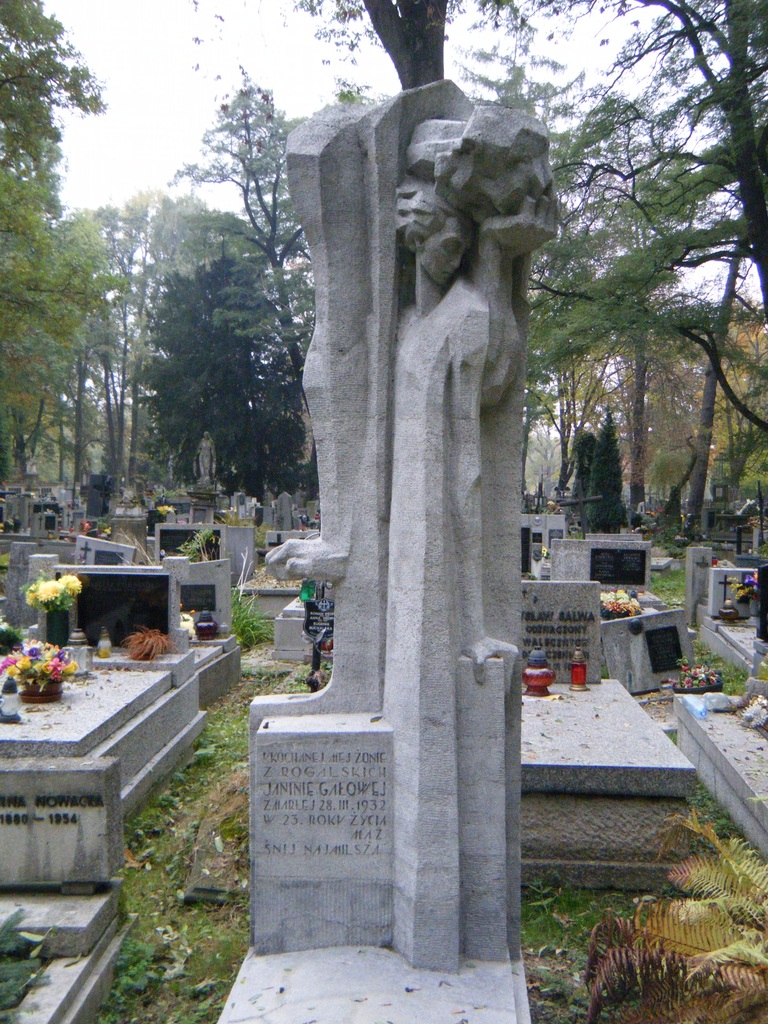
4. Participation in Competitions and Exhibitions
Józef Gosławski was an active participant in the art world, frequently entering and winning competitions, and showcasing his work in numerous solo and group exhibitions both domestically and internationally.
4.1. Art Competitions and Awards
Gosławski was a laureate of many artistic competitions throughout his career. In 1936, he won first prize for his bust of Józef Piłsudski; the sculpture, created between 1938 and 1939, is now housed at the National Museum, Warsaw, with a cast displayed at the Turek Museum.
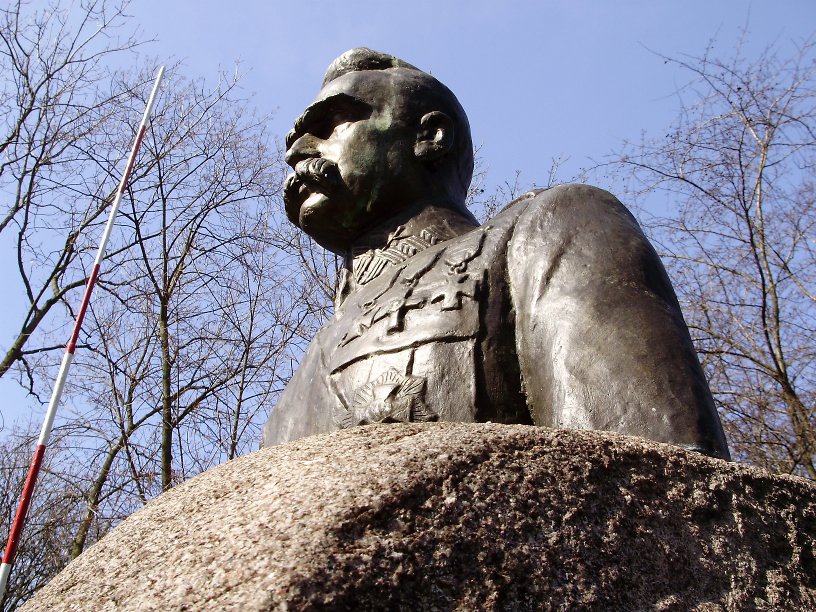
He received second prize in the 1946-1947 competition for the National Emblem. In 1951, his sculptures for Constitution Square, Warsaw, which included three multi-figure sculptural groups like Music on a building at Koszykowa Street 34/50 in Warsaw, earned him recognition. That same year, he won first prize for the GKKF badge and the State Award medal.
In 1953, he submitted models for a monument to World War II partisans in Lublin and a triumphal arch for Lublin, though the locations of these models are currently unknown. Also in 1953, he created a medal commemorating the 500th anniversary of Gdańsk's return to Poland, which is held in various collections including the Lublin Province Museum, National Museum, Poznań, Museum of Metal Engraving Arts, Wrocław, Royal Castle, Warsaw, Ossolineum, and private collections. In 1955, his model for the Adam Mickiewicz monument in Poznań entered private collections. A model for a monument to the victims of the Auschwitz concentration camp was submitted in 1957, its current location unknown.
In 1958, Gosławski participated in a coin design competition organized by the National Bank of Poland, achieving significant success. He won first prize for a 10 PLN coin depicting Mieszko and Dobrawa, which was later struck in 1966 as a 100 PLN silver commemorative coin for the millennium of Polish statehood. His 10 PLN Nicolaus Copernicus coin was put into circulation in 1959. He also received "favoritism" for the 5 PLN The Waryński Vessel and the 5 PLN The Fisherman (circulated 1958). For 2 PLN coins, he earned second prize for The Cockerels and the reverse of a coin with an eagle image, and "favoritism" for The Elk.
Further competition successes in 1958 included the monument of Heroes of Warsaw (first stage), with models stored at an unknown site and the Historical Museum of Warsaw. He also won first, second, and third prizes for the medal commemorating the 15th anniversary of The People's Army of Poland. In 1959, he was among six artists to win first prize for the monument of Heroes of Warsaw (second stage), a model created in cooperation with Wanda Gosławska and Stanisław Gosławski, now in the collections of the Historical Museum of Warsaw. From 1959 to 1960, he collaborated with Wanda and Stanisław Gosławski on a model for the monument of the First Army, the location of which is unknown.
In 1961, models for his Juliusz Słowacki monument in Warsaw were placed in the Museum of Metal Engraving Arts, Wrocław and private collections. In 1962, his model for the monument of murdered Jews in Lublin, titled Flaming ghetto (Polish: Płonące gettoPolish), entered private collections. The same year, he received two honorable mentions for the Bolesław Prus monument in Warsaw; one model was made in cooperation with Wanda Gosławska, with models now in private collections and the Museum of Metal Engraving Arts, Wrocław.
4.2. Solo Exhibitions
Józef Gosławski held 14 individual exhibitions throughout his career, showcasing the breadth and depth of his artistic output. His first recorded solo exhibition took place in 1933 at the Palace of Arts in Kraków. Later, in 1960, he exhibited 30 works at the Ośrodek Kultury Polskiej in Budapest. After his death, retrospective exhibitions continued to honor his legacy. In 1963, 49 of his works were shown at Dom Wojska Polskiego in Warsaw. A larger exhibition of 80 works was held at the Townhall in Wrocław in 1968. The most comprehensive solo exhibition, featuring 343 works, was organized by the Centralne Biuro Wystaw Artystycznych (now Zachęta) in Warsaw in 1973. Other notable solo shows include:
| Year | City | Institution | Number of Works |
|---|---|---|---|
| 1933 | Kraków | Palace of Arts | ? |
| 1960 | Budapest | Ośrodek Kultury Polskiej | 30 |
| 1963 | Warsaw | Dom Wojska Polskiego | 49 |
| 1968 | Wrocław | Townhall | 80 |
| 1973 | Warsaw | Centralne Biuro Wystaw Artystycznych | 343 |
| 1974 | Warsaw | Galeria Wojskowa DWP | 34 |
| 1974 | Warka | Muzeum im. Kazimierza Pułaskiego | 56 |
| 1974 | Bydgoszcz | Regional Museum | 18 |
| 1987 | Lublin | Regional Museum | 76 |
| 1995 | Kazimierz Dolny | Muzeum Nadwiślańskie - Galeria Letnia | 80 |
| 1996 | Bolesławiec | Bolesławiecki Ośrodek Kultury | 70 |
| 1997 | Chełmno | Regional Museum | 50 |
| 2000 | Konin | Regional Museum | 84 |
| 2003 | Warsaw | Galeria Domu Artysty Plastyka | 105 |
| 2014 | Orońsko | Polish Sculpture Center | ? |
| 2014/2015 | Warsaw | Sculpture Museum in Rabbitery | ? |
4.3. Group Exhibitions
Gosławski's works were featured in over 60 domestic and more than 20 international group exhibitions, demonstrating his widespread recognition and active participation in the artistic community.
4.3.1. Domestic
| Year | City | Title of Exhibition |
|---|---|---|
| 1946 | Lublin | The Festival of Arts (Festiwal SztukPolish) |
| 1947 | Kraków | The II Nationwide Winter Salon (II Ogólnopolski Salon ZimowyPolish) |
| 1949 | Warsaw | Artists in the struggle for peace (Plastycy w walce o pokójPolish) |
| 1950 | Warsaw | The I Nationwide Exhibition of Plastic Arts (I Ogólnopolska Wystawa PlastykiPolish) |
| 1951/1952 | Warsaw | The II Nationwide Exhibition of Plastic Arts (II Ogólnopolska Wystawa PlastykiPolish) |
| 1953 | Warsaw | 10 years of People's Army of Poland (10 lat Ludowego Wojska PolskiegoPolish) |
| 1953 | Lublin | The Exhibition of models of the triumphal arch for Lublin (Wystawa projektów Łuku Triumfalnego w LubliniePolish) |
| 1954 | Warsaw | The IV Nationwide exhibition of Plastic Arts (IV Ogólnopolska Wystawa PlastykiPolish) |
| 1955 | Poznań | The Exhibition of Poznań District of Association of Polish Artists and Designers (Wystawa ZPAP Okręgu PoznańskiegoPolish) |
| 1955 | Poznań | The Autumn Exhibition of Poznań District of Association of Polish Artists and Designers (Jesienna wystawa ZPAP Okręgu PoznańskiegoPolish) |
| 1958/1959 | Warsaw | The Warsaw Sculpture 1945-1958 (Rzeźba warszawska 1945-1958Polish) |
| 1959 | Warsaw | Warsaw in contemporary art (Warszawa w sztuce współczesnejPolish) |
| 1959 | Warsaw | The II Nationwide Exhibition of Maritime Art (II Ogólnopolska Wystawa Plastyki MarynistycznejPolish) |
| 1960 | Warsaw | The Polish Sculpture 1945-1960 (Rzeźba polska 1945-1960Polish) |
| 1961/1962 | Warsaw | Polish Work of Art of 15-anniversary of People's Republic of Poland (Polskie dzieło plastyczne w XV-lecie PRLPolish) |
| 1962 | Lublin | Martyrdom and struggle of Polish Nation 1939-45 (Martyrologia i walka Narodu Polskiego 1939-45Polish) |
| 1962 | Poznań | The Autumn Salon (Salon JesiennyPolish) |
| 1963 | Warsaw | The Nationwide Exhibition of 20-anniversary of People's Army of Poland in Plastic Arts (Ogólnopolska Wystawa XX-lecia Ludowego Wojska Polskiego w twórczości plastycznejPolish) |
| 1963 | Warsaw | The I Nationwide Exhibition of Medallic Art (I Ogólnopolska Wystawa MedalierstwaPolish) |
| 1963 | Warsaw | Warsaw in Art (Warszawa w SztucePolish) |
| 1963 | Warsaw | The Exhibition in XVIII anniversary of liberation of Auschwitz (Wystawa w XVIII rocznicę wyzwolenia OświęcimiaPolish) |
| 1963 | Warsaw | The Exhibition of Applied Art in XV-anniversary of People's Republic of Poland (Wystawa sztuki użytkowej w XV-lecie PRLPolish) |
| 1963 | Warsaw | The Exhibition of sculptures and textiles of Warsaw District of Association of Polish Artists and Designers (Wystawa rzeźb i tkanin Okręgu Warszawskiego ZPAPPolish) |
| 1964 | Warsaw | Warsaw in Art (Warszawa w sztucePolish) |
| 1964 | Warsaw | The Nationwide Exhibition "Textile, ceramic, glass" (Ogólnopolska Wystawa "Tkanina, ceramika, szkło"Polish) |
| 1965 | Warsaw | The Exhibition of old master print and sculpture in XX-anniversary of People's Republic of Poland (Wystawa grafiki i rzeźby w XX-lecie PRLPolish) |
| 1965 | Toruń | Decorations, coins and medal of People's Republic of Poland (Odznaczenia, monety i medale PRLPolish) |
| 1966 | Wrocław | Medallic art in People's Poland 1945-1965 (Sztuka medalierska w Polsce Ludowej 1945-1965Polish) |
| 1969 | Warsaw | 25-anniversary of medallic art in Poland (25 lat sztuki medalierskiej w PolscePolish) |
| 1969 | Wrocław | The Exhibition of ceramic and glass in XXV-anniversary of People's Republic of Poland (Wystawa ceramiki i szkła w XXV-lecie PRLPolish) |
| 1969/1970 | Bydgoszcz | The medals of People's Republic of Poland (Medale PRLPolish) |
| 1969/1970 | Warsaw | 25 years of Warsaw sculpture (25 lat rzeźby warszawskiejPolish) |
| 1970 | Poznań | The war and peace in plastic art (Wojna i pokój w twórczości plastycznejPolish) |
| 1971 | Wrocław | Monuments and monumental sculpture in People's Republic of Poland (Rzeźba pomnikowa i monumentalna w PRLPolish) |
| 1971 | Toruń | Nicolaus Copernicus's topic in medallic art and numismatics (Tematyka kopernikowska w medalierstwie i numizmatycePolish) |
| 1971 | Bydgoszcz | Polish cities in the medals (Miasta polskie w medalachPolish) |
| 1972 | Wrocław | Polish medical medals and badges (Polskie medale i odznaki medycznePolish) |
| 1972 | Bydgoszcz | The women in the medallic art (Kobieta w twórczości medalierskiejPolish) |
| 1972 | Bydgoszcz | Famous Poles on the medals (Sławni Polacy na medalachPolish) |
| 1974 | Lublin | Review of Polish sculpture 1944-74 (Przegląd rzeźby polskiej 1944-1974Polish) |
| 1974 | Radom | Contemporary portrait sculpture (Współczesna rzeźba portretowaPolish) |
| 1974 | Bydgoszcz | The sports medals (Medale sportowePolish) |
| 1974 | Bydgoszcz | The medals of Polish museums (Medale muzeów polskichPolish) |
| 1974 | Bydgoszcz | Polish cities in the medals (Miasta polskie w medalachPolish) |
| 1977 | Bydgoszcz | Coins of People's Republic of Poland (Monety PRLPolish) |
| 1977 | Bydgoszcz | The people of theatre in medallic art (Ludzie teatru w medalierstwiePolish) |
| 1977 | Częstochowa | The exhibition of Polish postwar coins (Wystawa polskich monet powojennychPolish) |
| 1979 | Wrocław | Contemporary Polish medallic art 1944-1979 (Współczesne medalierstwo polskie 1944-1979Polish) |
| 1979/1980 | Bydgoszcz | The Polish writers on the medals (Pisarze polscy na medalachPolish) |
| 1980 | Bydgoszcz | Traditions of the Polish army (Tradycje wojska polskiegoPolish) |
| 1980 | Bydgoszcz | The women in the medallic art (Kobieta w twórczości medalierskiejPolish) |
| 1980 | Warsaw | The Polish science in the medals (Nauka polska w medalachPolish) |
| 1985/1986 | Bydgoszcz | Money of People's Poland 1944-1983 (Pieniądz Polski Ludowej 1944-1983Polish) |
| 1986 | Lublin | Lublin plastic art (Plastyka lubelskaPolish) |
| 1986 | Ostrołęka | Commemorative medals of Polish museums (Medale pamiątkowe Muzeów polskichPolish) |
| 1987 | Bydgoszcz | The women on the medal (Kobieta na medaluPolish) |
| 1988 | Tuchola | The jubilee medals of Polish cities (Medale jubileuszowe miast polskichPolish) |
| 1990 | Bydgoszcz | Frédéric Chopin and the people of his epoch (Fryderyk Chopin i ludzie jego epokiPolish) |
| 1996 | Bydgoszcz | Remarkable Poles on the medals (Wybitni Polacy na medalachPolish) |
| 1997 | Warsaw | Tadeusz Breyer and his students (Tadeusz Breyer i jego uczniowiePolish) |
| 1997 | Wrocław | The Polish sculpture (Rzeźba polskaPolish) |
| 1998/1999 | Warsaw | The time tunnel. Warsaw sculpture of the end of the century (Tunel czasu. Warszawska rzeźba końca wiekuPolish) |
| 2002 | Warsaw | Polish science in medallic art (Nauka polska w medalierstwiePolish) |
| 2007/2008 | Bydgoszcz | Pharmacy and medicine in medallic art (Farmacja i medycyna w medalierstwiePolish) |
| 2008 | Warsaw | The present absent (Obecni nieobecniPolish) |
| 2009 | Toruń | Nicolaus Copernicus in medallic art (Mikołaj Kopernik w medalierstwiePolish) |
| 2009 | Bydgoszcz | Polish museums in medallic art. From collections of the Leon Wyczółkowski District Museum in Bydgoszcz (Muzea polskie w medalierstwie ze zbiorów MOBPolish) |
| 2010 | Wrocław | Chopin Impressions (Impresje ChopinowskiePolish) |
| 2010/2011 | Warsaw | Polish Army in Józef Gosławski's medallic art and in the collection of medals of the Central Military Library (Wojsko Polskie w medalierstwie Józefa Gosławskiego i w kolekcji medali Centralnej Biblioteki WojskowejPolish) |
| 2011 | Warsaw | Polish School of Masters (Polska Szkoła MistrzówPolish) |
| 2011 | Warsaw | Sculptors of Saska Kępa yesterday and today (Rzeźbiarze Saskiej Kępy wczoraj i dziśPolish) |
| 2012 | Warsaw | Art Everywhere. Academy of Fine Arts in Warsaw 1904-1944 (Sztuka wszędzie. Akademia Sztuk Pięknych w Warszawie 1904-1944Polish) |
4.3.2. External
Gosławski's international presence included exhibitions across Europe.
| Year | State | City | Title of Exhibition | Institution |
|---|---|---|---|---|
| 1932 | Vienna | The International Exhibition of Caricatures (Międzynarodowa Wystawa KarykaturyPolish) | Vienna Künstlerhaus | |
| 1936 | Italy | Rome | The Exhibition of Association of Artists - "The Capitol" (Wystawa Koła Artystów Polskich "Kapitol"Polish) | ? |
| 1936 | Italy | Rome | The Exhibition of Association of Artists - "The Capitol" (Wystawa Koła Artystów Polskich "Kapitol"Polish) | ? |
| 1950 | Prague | The World Exhibition of Medallic Art (Światowa Wystawa MedalierstwaPolish) | ? | |
| 1950 | Rome | The exhibition of sacred art (Wystawa sztuki sakralnejPolish) | ? | |
| 1959 | Catania | Circolo Artistico | ? | |
| 1959 | Vienna | The International Exhibition of Contemporary Medals (Międzynarodowa Wystawa Medali WspółczesnychPolish) | ? | |
| 1963/1964 | Moscow-Minsk | The International at the 20. anniversary of The Great Patriotic War (Wystawa w 20. rocznicę Wielkiej Wojny OjczyźnianejPolish) | ? | |
| 1964 | Arezzo | The International Competition of Medallic Art (Międzynarodowy Konkurs MedalierstwaPolish) | ? | |
| 1965 | Berlin-Erfurt-Leipzig | The soldiers of the nation - the Polish army in the art (Żołnierze narodu - polska armia w sztucePolish) | ? | |
| 1966 | Kralupe | The international exhibition of medals (Międzynarodowa wystawa medaliPolish) | ? | |
| 1966 | Bulgaria | Sofia | The exhibition of Polish medallic art (Wystawa medalierstwa polskiegoPolish) | ? |
| 1966/1967 | Hungary | Travelling exhibition | The Polish army in the service of people's defense (Wojsko polskie w służbie ludowej obronnościPolish) | ? |
| 1967 | Yugoslavia | Travelling exhibition | The Polish army in the service of people's defense (Wojsko polskie w służbie ludowej obronnościPolish) | ? |
| 1967 | Travelling exhibition | ? | ? | |
| 1967 | Paris | The XXVII Salon of The Sacred Art (XXVII Salon Sztuki SakralnejPolish) | ? | |
| 1968 | Moscow | The social-revolutionary topics in Polish fine arts (Tematyka społeczno-rewolucyjna w polskiej sztuce plastycznejPolish) | ? | |
| 1969 | Hungary | Budapest | International Military Exhibition of Fine Arts (Międzynarodowa Wojskowa Wystawa PlastykiPolish) | ? |
| 1971 | Paris | The 50 years of the medallic art in Poland (50 lat sztuki medalierskiej w PolscePolish) | ? | |
| 1971 | The Hague | The exhibition of Polish medals (Wystawa medali polskichPolish) | ? | |
| 1972 | Berlin | The war and peace in the arts of People's Republic of Poland (Wojna i pokój w sztukach plastycznych PRLPolish) | ? | |
| 1985 | Prague | The Polish contemporary medallic art (Polskie medalierstwo współczesnePolish) | ? | |
| 2003 | Vienna | The New State. Polish Art between Experiment and Representation 1918-1939 (Nowe Państwo. Polska sztuka między eksperymentem a reprezentacją 1918-1939Polish, Der neue Staat. Polnische Kunst zwischen Experiment und Repräsentation von 1918 bis 1939German) | Leopold Museum |
5. Legacy and Commemoration
Józef Gosławski's artistic contributions have left a lasting impact on Polish art, particularly in the fields of sculpture and medallic design, and continue to be commemorated through various initiatives.
5.1. Artistic Legacy and Influence
Gosławski's strong position in medallic arts is confirmed by numerous awards and the acquisition of his works by museums in Poland, including Warsaw, Wrocław, Kraków, Lublin, and Toruń, as well as in other European cities such as Prague, Athens, Budapest, Rome, Vatican City, Paris, The Hague, Moscow, and Sankt Petersburg. He is considered a precursor of the withdrawal from the classic form and shape of medals, serving as a unique link between the generation of Konstanty Laszczka and Józef Aumiller and later medallists. His constant artistic exploration and willingness to work in different forms and materials, always with a focus on the human being, define his enduring legacy.
5.2. Awards and Honors
Throughout his career, Józef Gosławski was recognized for his artistic achievements. He was a laureate of many artistic competitions. His contributions were formally acknowledged when he was decorated with the Silver Cross of Merit, a significant Polish civil and military decoration.
5.3. Commemorative Initiatives
The memory of Józef Gosławski and his works, especially his medals, continues to be honored through commemorative initiatives beyond exhibitions. In December 2008, the Polish Mint issued a local currency for Lidzbark Warmiński, a ducat known as Four men (Polish: Czterech mężówPolish). The obverse of this ducat was based on Gosławski's medal titled Lidzbark Warmiński - The City of Great Men (Polish: Lidzbark Warmiński - miasto mężów znakomitychPolish).
In 2009, the Polish Mint produced a special medal series called "Famous Medallists," dedicated to Józef Gosławski. This set included a medal based on a project he had created during World War II, titled Year 1939, marking its first public presentation. Another medal in this series, designed by Hanna Jelonek, featured an image of Gosławski on the obverse and his Chopin monument on the reverse. Additionally, in 2009, the Polish Mint released silver and gold replicas of the 5 PLN "Fisherman" coin, which Gosławski had originally designed for a competition in 1958. Furthermore, a street in Wąwolnica, the village where the artist lived and created many works for years, has been dedicated in his honor.